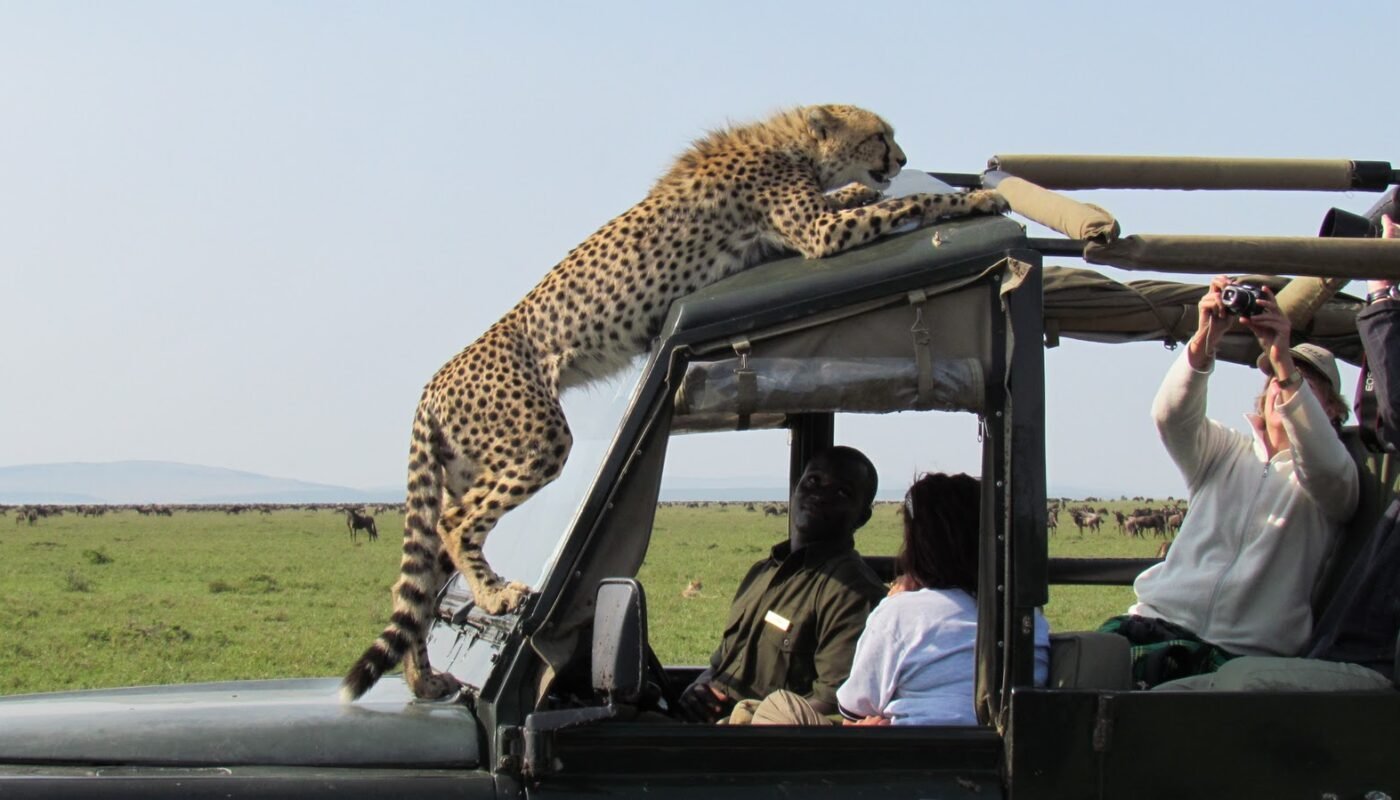Tanzania is a bucket-list destination for safari enthusiasts worldwide. From the legendary Serengeti National Park to the majestic Ngorongoro Crater, the country’s wilderness and wildlife offer incredible safari experiences throughout the year. However, choosing the right time to visit can make all the difference in your safari adventure. This comprehensive guide will help you identify the best months to visit Tanzania for a perfect safari, whether you’re looking for lush landscapes, abundant wildlife, or fewer crowds.
Tanzania’s Climate: A Key to Safari Timing
Tanzania’s diverse landscape includes everything from savannas to forests and mountain ranges. The country experiences two primary seasons: the dry season and the wet season. Understanding how these seasons affect Tanzania’s wildlife and safari conditions will help you determine the best time to visit.
Dry Season (June to October)
The dry season, which stretches from June to October, is generally considered the best time to visit Tanzania for safari. During this period, the weather is cooler, and the grass is low, making it easier to spot wildlife. Animals gather around waterholes and rivers, providing excellent viewing opportunities. This is also the time of the Great Migration, one of nature’s most spectacular events.
Wet Season (November to May)
The wet season is divided into two phases: the short rains from November to December and the long rains from March to May. While these months are less popular due to heavier rains and difficult road conditions, they offer some distinct advantages. The landscape is lush and green, birdlife is abundant, and calving season in the Serengeti brings adorable baby animals and predator action.
The Best Months for a Tanzania Safari
June to October: The Peak Safari Season
The months from June to October are widely regarded as the best time to visit Tanzania for a safari. The dry season ensures clear skies, minimal rain, and perfect conditions for wildlife viewing. These months also coincide with the Great Migration, where millions of wildebeest, zebras, and gazelles travel across the Serengeti plains, followed by predators such as lions and cheetahs.
- Weather: Cool and dry.
- Highlights: Great Migration, Big Five spotting, excellent visibility, fewer mosquitoes.
January to February: The Calving Season
January and February offer a unique safari experience in the Serengeti, as this is the calving season for wildebeest. Over 8,000 wildebeest calves are born each day, and the predators come out in full force, making it an excellent time for those who want to witness dramatic wildlife action.
- Weather: Warm with short rains possible.
- Highlights: Wildebeest calving, predator activity, vibrant landscapes.
November to December: Short Rain Season
The short rain season is often overlooked by travelers, but it can be an excellent time for a quieter, less crowded safari experience. The rain rejuvenates the landscape, bringing back lush greenery and allowing for some fantastic birdwatching. Prices for lodges and camps also tend to be lower during this period.
- Weather: Warm with occasional rain showers.
- Highlights: Fewer tourists, lush scenery, birdwatching opportunities.
March to May: The Long Rain Season
The long rain season from March to May is not ideal for a traditional safari, as heavy rains can make roads impassable and wildlife harder to spot. However, for budget travelers or those interested in a quieter safari, this season offers lower rates and the chance to see Tanzania’s landscapes at their greenest.
- Weather: Warm but wet, with heavy rainfall.
- Highlights: Lower rates, fewer crowds, vibrant birdlife.
Month-by-Month Breakdown of Safari Seasons
January to March: Calving Season in the Serengeti
The calving season is the most dramatic wildlife event during these months. The southern Serengeti becomes the stage for the birth of thousands of wildebeests, with predators close behind. If you’re a fan of wildlife photography or action-packed safaris, this is an unforgettable time to visit.
- Wildlife: Wildebeest, zebras, lions, cheetahs, leopards.
- Weather: Warm with occasional rains.
April to May: The Green Season
This period is also known as the “green season” due to the lush vegetation brought about by the long rains. While safaris are possible, this is the wettest time of the year, and some lodges may close due to the weather. However, it can be a great time to enjoy fewer tourists and reduced prices.
- Wildlife: Elephants, hippos, crocodiles, giraffes.
- Weather: Heavy rains, lush landscapes.
June to October: The Dry Season
June to October marks the height of the safari season. This is when you are most likely to see large numbers of animals as they gather near watering holes and rivers. The Great Migration’s river crossings usually happen between July and September, offering one of nature’s most thrilling spectacles.
- Wildlife: Great Migration, Big Five, large herds near water sources.
- Weather: Cool, dry, and clear.
November to December: Short Rain Season
The short rains start in November and typically last until early December. This is a transitional period when Tanzania is relatively quieter, making it an ideal time for those seeking solitude and serenity in the parks.
- Wildlife: Birdwatching, migratory species, elephants, giraffes.
- Weather: Light rains, green landscapes.

Tanzania Safari Highlights by Season
Dry Season (June to October)
- Great Migration: The movement of over a million wildebeest, zebras, and antelopes is one of the most iconic events in the animal kingdom.
- Predator Activity: Lions, leopards, cheetahs, and other predators follow the migration, making it a thrilling time for wildlife lovers.
- Ngorongoro Crater: The dry season is the best time to visit the crater as animals gather around water sources, providing exceptional game viewing.
Wet Season (November to May)
- Calving Season: The wildebeest calving in the southern Serengeti is a must-see event, especially for those interested in predator-prey dynamics.
- Birdwatching: The wet season is an excellent time for birdwatchers, as many migratory species arrive in Tanzania.
- Lush Landscapes: The rains bring the savannahs and forests to life, creating stunning backdrops for photos.
What to Consider When Planning Your Trip
Budget
The best time to visit often coincides with higher prices due to the influx of tourists. If you’re on a budget, consider visiting during the shoulder seasons (November to December or January to March), when rates are lower but wildlife viewing is still excellent.
Crowds
The peak season (June to October) is the most popular time to visit, so expect larger crowds in major parks like the Serengeti and Ngorongoro Crater. If you prefer a quieter experience, plan your visit during the short rains or early in the calving season.
Health and Safety
Tanzania is a malaria-prone area, especially during the wet season. Make sure to consult with a healthcare provider about vaccinations and malaria prophylaxis before your trip.

Conclusion
Tanzania offers an extraordinary safari experience year-round, but the best time to visit depends on your preferences. For wildlife enthusiasts, the dry season from June to October is unbeatable due to the Great Migration and easier animal spotting. However, the calving season in January and February offers unique experiences with predator action, while the wet season brings lush landscapes and excellent birdwatching opportunities. Whether you’re chasing the Great Migration or looking for a more relaxed, less crowded safari, Tanzania’s incredible national parks will not disappoint.
Planning your perfect Tanzania safari? Get in touch with us at Vion Africa Travels to help tailor your adventure to your preferred travel time!

